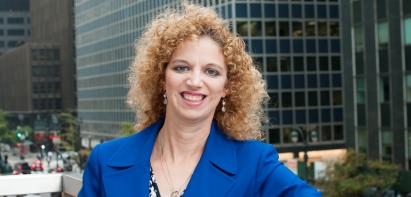Aligning Forces
Polled at the end of the first quarter, executives responding to our sentiment survey expressed some continued skepticism regarding both economic conditions and real estate industry performance.
Polled at the end of the first quarter, executives responding to our sentiment survey expressed some continued skepticism regarding both economic conditions and real estate industry performance. But recent reports show reason for optimism as we approach the midpoint of 2015. With the job market continuing to improve, energy prices compressed and interest rates remaining low, consumers and investors alike are active and picking up their pace. That suggests a favorable outlook for the commercial real estate industry for some time to come.
Prospects are particularly promising for the multi-family sector, according to the newly released “U.S. Multifamily Outlook” from Yardi Matrix. While naysayers have at times prognosticated a bursting bubble for the long-favored property type, the report, which draws on data from Pierce-Eislen, predicts strong absorption this year as young adults become better able to afford movement into their own apartments while the high cost of ownership limits the pace of shift out of rental units. Indeed, with vacancies at their lowest point in history, developers should have no trouble leasing up most of the almost 50,000 units that came online in the first quarter and 243,000 units under construction and planned for delivery this or next year, according to the report. That said, fast-growing metros like Denver and Seattle will likely succeed better than more challenged markets like government-led Washington, D.C., and energy-driven Houston and Dallas.
As an investment alternative, real estate continues to attract a following around the world, according to Prudential Real Estate Investors’ white paper “Global Outlook: The Search for Yield.” And while recent years’ activity was accented by a need for safe capital havens, a general improvement in the world economy—driven by developed markets such as the U.S., Japan and even Europe—is now behind the search for higher-yielding opportunities. What’s more, as demand catches up with supply, investors are increasingly pursuing large portfolios. The volume of such deals in fourth quarter 2014 achieved the highest level since third quarter 2007, according to the report. Further characteristics include an interest in non-CBD prospects in markets such as Boston, Miami, Brussels, Chicago and Hamburg, as well as pursuit of high-end retail, although retail performance varies widely by market.
Of course, nothing is possible without capital, and financiers are highly visible these days, be they conduit lenders, government-sponsored enterprises or commercial banks. Commercial banks are even offering some non-recourse loans, although on conservative terms, and construction lending is picking up.
Taken together, this alignment of players suggests that, indeed, real estate’s star is on the rise. And in a cyclical business, that is a good place to be.








You must be logged in to post a comment.